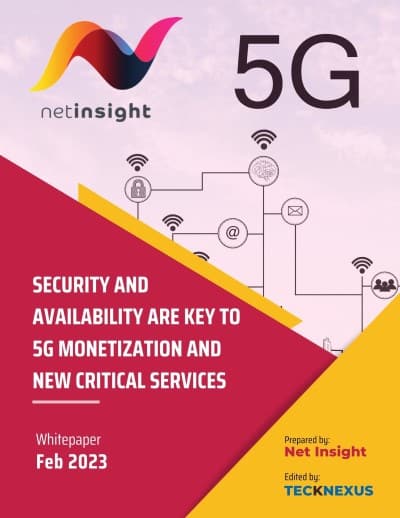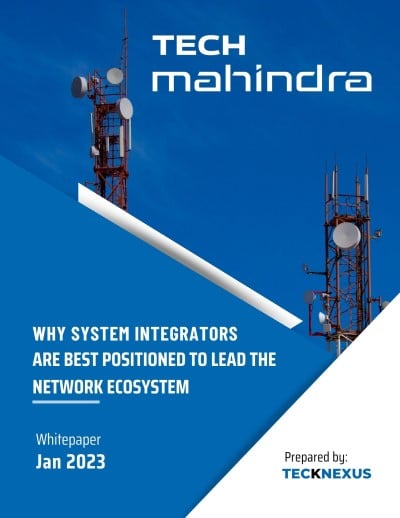Have you ever wondered how your mobile phone service could be more flexible, affordable, and tailored to your specific needs? Mobile Virtual Network Operators (MVNOs) are transforming how we connect and communicate in the rapidly evolving world of telecommunications. By leveraging existing networks and focusing on customer-centric solutions, MVNOs are making mobile services more accessible and inclusive than ever before. In this article, let’s explore how MVNOs reshape the industry and empower underserved markets.
The Surge of MVNOs in Telecommunications
MVNOs have become significant players in the telecommunications landscape, offering unique alternatives to traditional mobile network providers. According to various market research reports, the global market for mobile virtual network operators (MVNOs) is anticipated to grow significantly at a compound annual growth rate (CAGR) between 6.7% and 8.8% from 2023 to 2030. Fortune Business Insights forecasts the market will expand from $84.36 billion in 2023 to $149.13 billion by 2030, representing an 8.5% CAGR. Future Market Insights predicts the market will be valued at $81.42 billion in 2024 and will reach $167.7 billion by 2034, with a 7.5% CAGR. Meanwhile, Databridge Market Research estimates the market will hit $156.74 billion by 2031, with an 8.04% CAGR from 2024 to 2031. PS Market Research expects the MVNO market to grow at an 8.8% rate from 2024 to 2030. Additionally, Markets and Markets projects the market to grow at a 6.7% CAGR from 2023 to 2028. This substantial growth indicates the rising demand for MVNO services and the shifting consumer preferences towards more flexible and cost-effective mobile solutions.
Understanding the MVNO Business Model
MVNOs partner with established mobile network operators (MNOs) to use their network infrastructure. That means MVNOs don’t have to build their own cell towers or networks, which saves a lot of money. Instead, they pay the MNOs for access to their networks and focus on offering unique and affordable plans to their customers. This approach allows MVNOs to enter the market with lower costs and offer competitive pricing. For example, Google Fi uses T-Mobile networks to provide its services, offering flexible plans that adjust to the user’s needs each month. It also provides extensive international coverage, making it an attractive choice for anyone who travels frequently. This flexibility and focus on customer needs set MVNOs apart from traditional carriers.
MVNOs often target specific customer groups that big carriers might overlook. Some offer low-cost plans to budget-conscious consumers, while others might target niche markets like travelers or senior citizens. By understanding and catering to specific needs, MVNOs can build strong customer loyalty and fill gaps in the market that larger carriers may ignore. This business model also encourages innovation. Because MVNOs don’t have to worry about maintaining a network, they can spend more time and resources developing new services and features. This results in a more diverse range of options for consumers, who benefit from more tailored and often more affordable mobile plans.
Flexible and Customizable Mobile Services
Unlike traditional carriers with rigid plans, MVNOs provide options to meet the needs of different customers. This flexibility allows users to choose plans that best suit their usage patterns and budget rather than paying for features they don’t need. A prime example is Consumer Cellular, an MVNO that has successfully identified and catered to specific market niches. Through its AARP Consumer Cellular phones for seniors, Consumer Cellular can offer affordable plans that are easy to understand and use. Consumer Cellular provides low-cost, no-contract plans with features like easy-to-read billing statements and senior-friendly customer service. It becomes an attractive choice for older adults who may find traditional mobile carrier plans too complex or expensive.
Additionally, MVNOs like Consumer Cellular offer a level of personalization that larger carriers often can’t. For example, they provide plans allowing users to pay only for the amount of talk, text, and data they use. This approach helps customers save money and avoid the frustration of paying for unnecessary extras. This customizability is especially beneficial for those with specific needs or limited budgets, such as students, families, or individuals with fixed incomes.
MVNOs Empowering Underserved Markets
MVNOs play a crucial role in extending mobile connectivity and services to segments of the population that have traditionally been overlooked or inadequately served by mainstream MNOs. By addressing the unique needs of these communities, MVNOs contribute to greater digital inclusion and social equity.
Reaching Rural and Low-Income Areas
Traditional carriers often focus on urban areas, leaving rural and low-income regions with limited service options. This can create a significant gap in access to reliable mobile services. MVNOs are addressing this issue by offering affordable and reliable options to these underserved communities. For instance, TracFone Wireless targets budget-conscious consumers by offering prepaid plans that don’t require long-term contracts or credit checks. This flexibility is particularly popular in rural areas where economic options are limited, and people might be unable to commit to expensive, long-term plans. TracFone’s approach allows individuals and families to manage their mobile expenses more effectively.
In rural areas, affordable mobile services can significantly impact daily life. People can use their phones to access important information, stay in touch with family and friends, and even seek employment opportunities. For low-income households, MVNOs provide a vital link to the digital world, helping to level the playing field and guarantee that everyone can participate in the modern economy.
Bridging the Digital Divide
The digital divide is the inequality in technology access. This divide can create significant disadvantages for people lacking internet access, smartphones, and other digital tools. MVNOs are crucial in narrowing this gap by making mobile services accessible to everyone. An excellent example of this effort is Assurance Wireless. Their Lifeline Assistance program provides free phones and monthly services to low-income individuals, ensuring that those unable to afford a phone or service plan can stay connected. Access to a phone means people can reach essential services, like healthcare, education, and employment opportunities. By targeting low-income families, students, and the elderly, MVNOs help more people get online and stay connected. This is particularly important in today’s world, where having internet access is crucial for everyday tasks.
Embracing Emerging Technologies in MVNOs
As the telecommunications landscape evolves, MVNOs also integrate emerging technologies to enhance their service offerings and stay competitive.
Leveraging 5G Technology for Enhanced Services
With the rollout of 5G, MVNOs can offer faster and more reliable services. The enhanced bandwidth and lower latency of 5G allow MVNOs to provide improved user experiences, especially for applications requiring high data rates, such as video streaming, gaming, and virtual reality.
For example, Visible, an MVNO owned by Verizon, leverages Verizon’s 5G network to offer its customers high-speed data and reliable connectivity at competitive prices. By using 5G, MVNOs can also support advanced services like smart home devices and Internet of Things (IoT) applications, further broadening their appeal to tech-savvy consumers.
Integrating AI and Automation in MVNO Operations
MVNOs also incorporate Artificial Intelligence (AI) and network automation to enhance customer service and streamline operations. AI-driven chatbots and virtual assistants can provide instant support, resolving customer queries efficiently. Automation helps in managing network resources dynamically, ensuring optimal performance and reducing operational costs. For instance, FreedomPop, an MVNO offering free basic mobile service, uses AI to analyze customer behavior and tailor its marketing efforts. This personalization improves customer engagement and retention, highlighting how technology integration can benefit MVNOs and their users.
Harnessing Edge Computing for Better Performance
Implementing Edge Computing allows MVNOs to offer services requiring real-time processing with minimal latency. By bringing computation closer to the data source, MVNOs can support applications like autonomous vehicles, augmented reality (AR), and virtual reality (VR), enhancing user experiences and opening new revenue streams. For example, Ting Mobile, an MVNO known for its flexible plans, could leverage edge computing to offer advanced IoT services. These services could include smart home management and real-time health monitoring, providing added value to their customers.
Commitment to Environmental and Social Responsibility
MVNOs are also promoting sustainability and social responsibility in their operations.
Advancing Green Networks in Telecommunications
As awareness of environmental issues grows, MVNOs are exploring ways to reduce their carbon footprint and promote green networks. By using the infrastructure of existing MNOs, MVNOs can minimize the need for additional cell towers and network equipment, reducing energy consumption and environmental impact. Some MVNOs, like EcoMobile, have made sustainability a core part of their brand. EcoMobile offers eco-friendly mobile plans and donates a portion of its profits to environmental causes, appealing to environmentally conscious consumers.
Promoting Social Equity Through MVNOs
MVNOs also focus on social equity by ensuring their services are accessible to a broader demographic. Initiatives like providing affordable plans, supporting low-income households, and offering services in multiple languages help bridge the gap in digital access. For instance, Reach Mobile offers affordable plans and operates on a social impact model. For every customer, Reach Mobile connects another person in need with essential mobile services, contributing to greater digital inclusion.
Enhancing Consumer Choice and Competition
MVNOs have changed the telecommunications market by offering alternative mobile services, creating a competitive and dynamic environment. Their presence has significantly enhanced consumer choice, offering options tailored to different needs and preferences. MVNOs are known for their innovative approaches to mobile service offerings, which often cater to specific consumer needs that larger carriers might overlook.
For instance, Mint Mobile has introduced a creative bulk-purchasing model. Here, customers can purchase several months of service upfront at a discounted rate. This approach is particularly attractive to cost-conscious users who want to save money without compromising service quality. Customers can experience substantial savings over traditional monthly plans by opting to pay for three, six, or twelve months in advance.
Another innovation from MVNOs is the introduction of data rollover plans. With these plans, any unused data from one month can be carried over to the next, ensuring customers get the most out of their payments. This starkly contrasts many traditional carriers, where unused data often expires at the end of each billing cycle. Data rollover plans are especially beneficial for users whose data usage varies monthly, providing greater flexibility and value.
MVNOs are also known for offering no-contract options and letting customers switch plans or providers without being tied down by long-term commitments. This flexibility is a major advantage for users who want to avoid traditional contracts’ financial burdens and restrictions. No-contract plans often come with competitive pricing and the same network quality as those offered by larger carriers, making them an appealing choice for a wide range of consumers.
Additionally, many MVNOs provide cheaper international calling and roaming options than traditional carriers. This is particularly useful for customers with family and friends abroad or who travel frequently. By offering affordable international plans, MVNOs make it easier for people to stay connected anywhere, enhancing their overall user experience and satisfaction.
Customer-Centric Strategies of MVNOs
MVNOs prioritize providing excellent support and creating a community-oriented approach. For instance, Republic Wireless encourages users to help each other solve everyday problems through their online community. This strategy reduces reliance on traditional customer service and builds a supportive environment where users feel empowered and valued.
Customer-focused strategies also include transparent billing practices and straightforward plans that meet specific customer needs. MVNOs often offer no-contract options and flexible payment schedules, which appeal to consumers seeking simplicity and affordability. By listening to customer feedback and adapting quickly to their preferences, MVNOs can cultivate loyal customer bases and distinguish themselves from larger, less agile competitors.
MVNOs Are Leading a Telecom Transformation
MVNOs are transforming how we stay connected by offering unique, customizable services that big telecom companies often overlook. This shift towards innovation and inclusivity is reshaping the telecommunications landscape, ensuring that more people can enjoy reliable connectivity tailored to their needs.




























